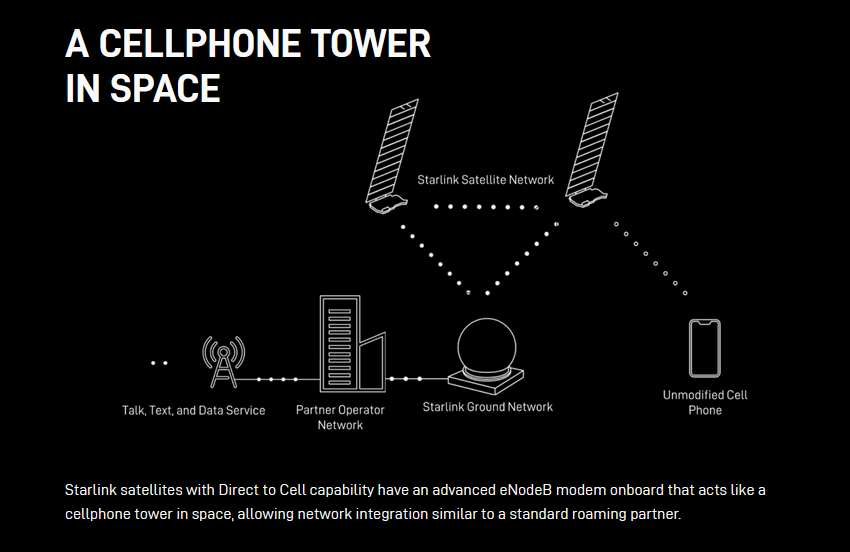Starlink's website update is revealing a bit more about its plans for a satellite-delivered cell phone service. The new page for "Starlink Direct to Cell" promises "ubiquitous coverage" from "cellphone towers in space" that will work over bog-standard LTE. The current timeline claims there will be text service starting in 2024, voice and data in 2025, and "IoT" service in 2025.
Today satellite phone connectivity still requires giant, purpose-built hardware, like the old-school Iridium network phones. If you're only looking for emergency texting, you can also make do with Apple's introduction of the barely there connectivity paradigm, requiring being inside a connectivity window, holding up a phone, and following a signal-targeting app. Starlink wants to bring full-blown space connectivity to normal smartphone hardware.

Once the space network gets up and running, SpaceX says the service "works with existing LTE phones wherever you can see the sky. No changes to hardware, firmware, or special apps are required, providing seamless access to text, voice, and data." There will be hardware changes to Starlink satellites, though, with the latest versions sporting the necessary LTE equipment. The new site doesn't reiterate expectations for service speed, but when this project was announced in 2022, the claim was 2–4Mbps.

The page says Starlink satellites with the Direct to Cell capability will first be launched on the workhorse Falcon 9 rocket and eventually Starship. Starship's bigger payload represents a big capability upgrade for Starlink since the full-size "V2" satellites don't fit on the smaller Falcon 9, and today the company is getting by with "V2 Mini" variants due to Starship delays. The 2025 and 2026 service upgrades for Direct to Cell most likely depend on getting the big rocket up and running, so like all SpaceX projects, you should take these timelines with a grain of salt. This whole project was originally scheduled to start a "beta service" this year, but making that deadline now looks iffy.
When the new network eventually gets up and running, SpaceX has several traditional cell phone companies lined up to sell the service. The page lists SpaceX's partners as T-Mobile in the US, Rodgers in Canada, KDDI in Japan, Optus in Australia, One NZ in New Zealand, and Salt in Switzerland. The new promo page is seeking additional cellular partners.



3175x175(CURRENT).thumb.jpg.b05acc060982b36f5891ba728e6d953c.jpg)
Recommended Comments
There are no comments to display.
Join the conversation
You can post now and register later. If you have an account, sign in now to post with your account.
Note: Your post will require moderator approval before it will be visible.